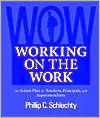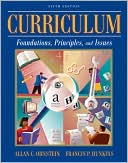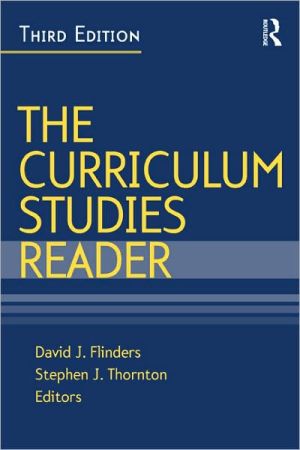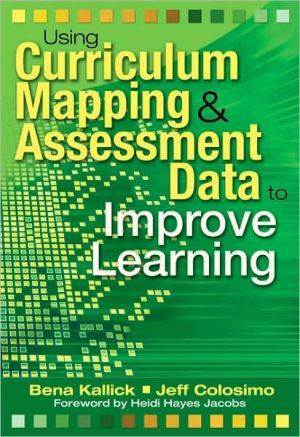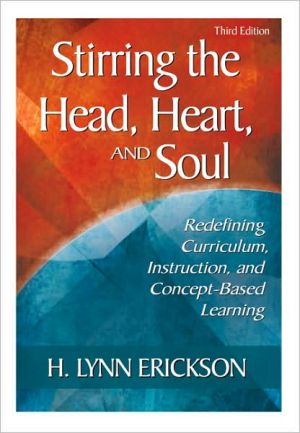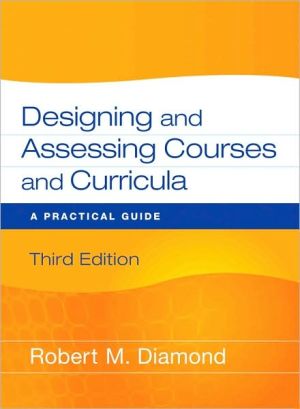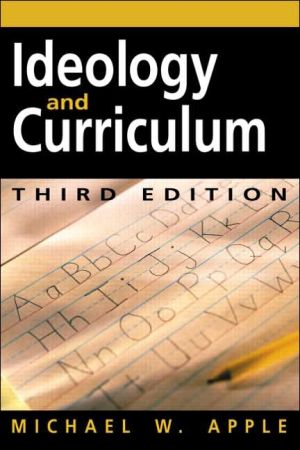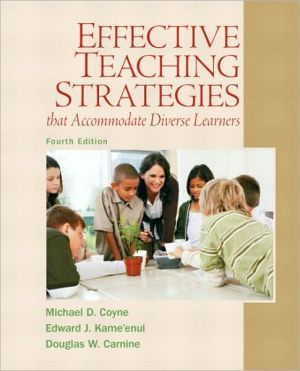Blueprint for Learning: Constructing College Courses to Facilitate, Assess, and Document Learning
** An acclaimed educator presents hands-on advice on teaching that meets today’s emphasis on learning outcomes and assessment\ ** Informed by the most up-to-date research on how people learn\ ** For all instructors in higher education—as well as high school teachers\ Laurie Richlin has been running a workshop on course design for higher education for over fifteen years, modifying and improving it progressively from the feedback of participants, and from what they in turn have taught her.\ Her...
Search in google:
** An acclaimed educator presents hands-on advice on teaching that meets today’s emphasis on learning outcomes and assessment** Informed by the most up-to-date research on how people learn** For all instructors in higher education--as well as high school teachersLaurie Richlin has been running a workshop on course design for higher education for over fifteen years, modifying and improving it progressively from the feedback of participants, and from what they in turn have taught her.Her goals are to enable participants to appropriately select teaching strategies, to design and create the conditions and experiences that will enable their students to learn; and in the process to develop the scholarly scaffold to document their ongoing course design and achievements.This book familiarizes readers with course design elements; enables them to understand themselves as individuals and teachers; know their students; adapt to the learning environment; design courses that promote deep learning; and assess the impact of the teaching practices and design choices they have made. She provides tools to create a full syllabus, offers guidance on such issues as framing questions that encourage discussion, developing assignments with rubrics, and creating tests. The book is packed with resources that will help readers structure their courses and constitute a rich reference of proven ideas.What Laurie Richlin offers is a intellectual framework, set of tools and best practices to enable readers to design and continually reassess their courses to better meet their teaching goals and the learning needs of their students.
Preface; Acknowledgments; Introduction; SECTION ONE: 1 Course (Re)design; 2 Scholarly Teaching and the Scholarship of Teaching and Learning; 3 Scholarly Design Process; 4 Professor; 5 Students; 6 Environment; 7 Content; SECTION TWO: 8 Facilitating Learning; 9 Biology of Learning; 10 Kolb Experiential Learning Cycle; 11 Gardner’s Multiple Intelligences; Styles of Learning and Teaching; 12 Cognitive Development of College Students; 13 Bloom Taxonomies; Motivation; 14 Metaphors for the Teaching; Learning Connection; 15 Ethics of Teaching; 16 Designing Learning Experiences; SECTION THREE: Assessing Learning; 17 Grading Schemes and Policies; 18 From Goals to Assessment.; 19 Building in Feedback: Classroom Assessment Techniques; 20 Tests and Blueprints; 21 Assignments and Rubrics; SECTION FOUR: Documenting Learning; 22 Syllabus; 23 Attachments; 24 Explanation of Design Choices; SECTION FIVE: Learning Resources and Planning Instruments; Seven Principles for Good Practice in Undergraduate Education; Learner-Centered Psychological Principles; Course Portfolio Design: Syllabus, Attachments, and Explanation; Revised Teaching Goals Inventory; Sample Teaching Goals by Bloom Levels; Grasha-Reichmann Student Learning Style Scales; Grasha Teaching Styles Inventory: Version 3.0; Instructional Script; Ethical Principles in University Teaching; Rubrics for Portfolio; References; Glossary of Course Design Terms; Index.
\ From the Publisher"I am preparing for a course this spring and am using Blueprint for Learning as a guide – this is absolutely wonderful! I appreciate the clarity and systematic manner in which the material is presentedl. It makes it very easy to use and to gain great benefit from. Thanks!"\ "[This book] is an outstanding faculty development tool. It neither overcomplicates nor oversimplifies instructional design, and it provides numerous illustrations and references, making it a well-rounded tool. It would be best utilized as a study guide for faculty interested in engaging, learner-centered, accountable instruction.\ ...an excellent instrument in faculty development, but best used in a structured 'study group' with a seasoned facilitator working with new and interested faculty. Like any good textbook, it is a vehicle for discussion and exploration. Thus, it bests serves the members of such a study group who can flesh out the points made. The visual elements are generally excellent; they are clean and open up the text in interesting ways.\ “Richlin’s text provides a concise survey of research and literature pertaining to instructional design, learning principles, assessment, and documentation of learning outcomes, making such a scope of knowledge manageable for the academic advisor. The author operationalizes research and literature and applies it to sample classroom settings, which can be translated (with minimal limitation) into the academic advising setting. The functionality of Richlin’s Blueprint for Learning makes it usable as just that – a detailed, yet user-friendly outline for maximizing learning not only within classroom settings, but into the advising conference and beyond, making it a ‘must have’ reference text."\ "Models, matrices, and rubrics abound in this rich resource for course design and the scholarship of teaching and learning. Faculty will love it!"\ "Richlin has done a very thorough synthesis of the primary work in the field...it will be of great value to me and our faculty."\ "Great job of synthesizing and integrating so much content into a coherent, useful form."\ “As always, I am intrigued and impressed by Richlin’s ability to summarize an expanse of ideas and experiences, create a compelling synthesis, and present this new understanding in readable and appealing form."\ “It is the kind of book faculty will actually be able to understand and use because it is straightforward and connects theory, research, and practice in a seamless manner.”\ “I’m just stunned at its wonderful value. I really like the specific examples and all of the concrete worksheets and tables. Just amazingly thorough and useful, and so conveniently brief. It’s truly a service for us all, faculty and faculty development pro’s alike!”\ \ \

